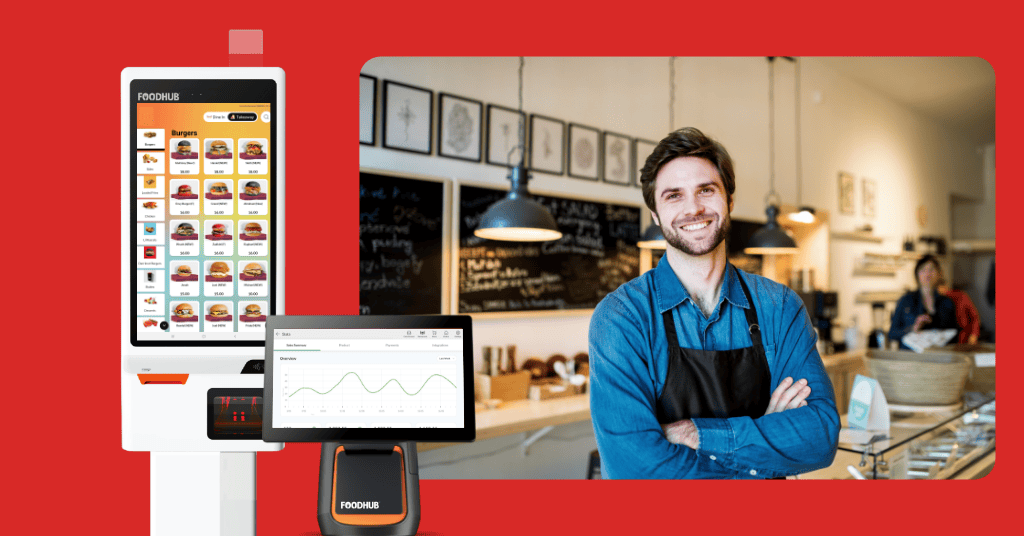How to Start a Restaurant Business in the UK (2025 Guide)


Starting a restaurant business in the UK in 2025 requires careful planning, strategic restaurant marketing strategies, and a solid restaurant business plan. With evolving consumer preferences, increasing costs, and technological advancements, entrepreneurs must be well-prepared to navigate the complexities of the hospitality sector.
The UK restaurant industry is expected to reach £19.5 billion in 2025, showing a 2.6% growth from 2024. The fast food and takeaway market is also expanding, with projections indicating a rise to £23.8 billion. Contactless payments are becoming the norm, with over 80% of transactions expected to be cashless. Consumers are increasingly focused on affordability and experience-driven dining, with 74% of restaurants adopting advanced digital solutions for seamless ordering and service.
Industry Growth Projection
| Year | Market Size (£ Billion | Growth Rate (%) |
| 2023 | 18.2 | 2.3 |
| 2024 | 19.0 | 2.5 |
| 2025 | 19.5 | 2.6 |
A well-structured restaurant business plan is essential for securing funding and operational success. It should include:
Clearly define your restaurant's concept, mission, and vision. Highlight your unique selling proposition (USP) and market positioning.
Understanding your target audience and competition is critical. Research demographics, dining habits, and spending patterns. Consumer spending in 2025 is projected to be value-driven, with 60% of UK diners prioritising affordability. The industry is also seeing a shift towards smaller menus and flexible dining options to reduce operational costs.
Define your restaurant’s business model based on market demand. Full-service restaurants continue to attract premium customers, while fast casual and takeaway models are witnessing higher growth due to increased demand for convenience. The rise in digital orders, expected to account for 45% of restaurant sales in 2025, makes technology integration a necessity.
Running a restaurant in the UK involves significant financial investment, from the initial setup costs to ongoing operational expenses, with a wide range of factors influencing the overall budget.
Opening a restaurant in London can cost between £200,000 and £1 million, influenced by factors such as location, size, and type of establishment.
Essential marketing expenses, including menu design, website development, and signage, can range from £5,000 to £20,000, depending on the scale and scope of marketing efforts.
Ongoing monthly operational expenses, covering rent, utilities, staffing, and supplies, typically range from £8,000 to £25,000, varying with the restaurant's size and location.
Managing operations effectively involves hiring skilled staff, optimising supply chain costs, and ensuring compliance with UK food safety regulations. Rising labour costs, projected to increase by 3.8% in 2025, necessitate workforce planning and automation where possible.

Securing funding is crucial for launching a restaurant. Common options include personal savings, bank loans, investor funding, and government grants. With inflation affecting business costs, interest rates on business loans in 2025 are expected to range between 5-7%.
Legal compliance includes registering with the local council, obtaining a premises license if serving alcohol, and adhering to food hygiene standards. The Food Standards Agency (FSA) expects 95% of restaurants to comply with food safety ratings in 2025, improving customer trust and brand credibility.
The right location significantly impacts restaurant success. High footfall areas continue to dominate, with urban centres attracting the highest consumer spending. Accessibility, public transport links, and local competition must be considered when selecting a site. Rental costs in prime locations are projected to increase by 4% in 2025, making financial planning essential for sustainability.
Effective restaurant marketing strategies are essential to attract and retain customers. Digital marketing remains the most impactful, with 80% of diners discovering new restaurants through online searches and social media.
SEO Optimization: Keywords like "best restaurants near me" can boost online visibility.
Google My Business: Keeps your restaurant visible to potential customers.
Influencer Marketing: Partnering with food bloggers can enhance brand reach.
Loyalty programs are also effective, with 68% of customers preferring restaurants that offer rewards. Offering first-time discounts, referral bonuses, and subscription-based meal plans can enhance customer retention.

Technology adoption is reshaping the industry. In-store ordering kiosks and self-service solutions are expected to be present in 65% of UK restaurants by 2025, improving efficiency and reducing labour costs. AI-driven inventory management is also helping reduce food waste, with an estimated 20% cost savings for businesses implementing automated stock tracking.
To stay competitive, UK restaurants are increasingly integrating Electronic Point of Sale (EPOS) systems and self-service kiosks. These solutions streamline operations, improve order accuracy, and enhance customer experience.
EPOS Systems: Modern EPOS solutions help manage inventory, track sales, and analyse customer trends, leading to 15% faster service times and 30% improved operational efficiency.
Self-Service Kiosks: With demand for convenience rising, kiosks are becoming essential. 50% of UK restaurants are expected to adopt in-store ordering kiosks by 2025, reducing queue times and increasing average order value by 20%.
Foodhub for Business Integrations: Foodhub’s integrated solutions provide seamless connectivity between EPOS, online ordering, and in-store kiosks, offering a centralised system that enhances efficiency and profitability.
Launching a restaurant business in the UK in 2025 requires a mix of strategic planning, financial preparedness, and strong restaurant marketing strategies. With consumer expectations shifting towards value, convenience, and experience-driven dining, staying agile and embracing technology will be key to long-term success.
By adopting Foodhub for Business solutions, such as EPOS and kiosk integrations, restaurant owners can optimize operations, boost revenue, and provide an enhanced dining experience.
By following these structured steps, aspiring restaurateurs can navigate challenges and build a thriving restaurant that meets the evolving needs of the UK’s dynamic food industry.